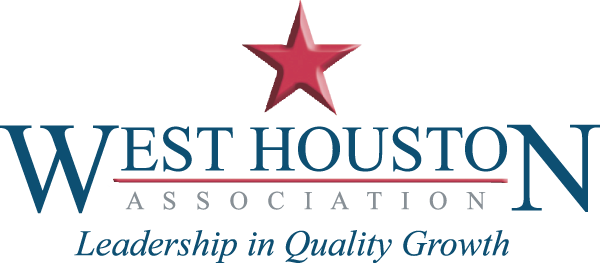WHA’s Quality Planned Development Committee works to establish and promote a standard for all development corresponding with that of master-planned communities.
As West Houston continues to grow at a fast pace there is a need to encourage development to follow standards and guidelines that encourages quality growth for the region.
Goal
In order to maintain its development pace, Greater West Houston has employed the full toolbox of options. Regional centers are developing with increasing density. Master Planned Communities (MPCs) continue to expand the urban edge, improving their offerings with each new community. Efficient highways and major roads that provide reliable, safe connections from these MPCs and communities to regional centers have been a key to growth in Greater West Houston. Special Districts have been a key part of development and redevelopment across the region. Both the public and private sectors should become more cooperative, creative, and adaptable, working to ensure that the built environment improves its appeal, value, and resiliency.
Our region’s future development foot print will be heavily influenced by the speed, reliability, and safety of our transportation system. People will typically commute no more than approximately 30 minutes one way and will not travel to areas that are reputedly unsafe. With increase growth Greater West Houston’s mobility and open space advantages will face formidable challenges.
Connected, Safe Spaces. Creating safe, connected, inviting spaces is key for families and businesses. Within Master Planned Communities (MPCs) and management districts, walkability and connectivity are increasingly important. Work by Greater West Houston’s cities and counties and organizations like Transportation Advocacy Group (TAG)—Houston and Houston Parks Board to create connected, safe public spaces has improved the urban environment and land values.
Special Districts. Most special districts are accountable to cities, counties, state agencies, and local property owners. These districts derive income from increasing value within their boundaries, making them ideal for balancing varied interests. From better streets to safer streets, special districts generally bring better design, maintenance, operations, and services to the areas that they represent. Virtually all management districts and Municipal Utility Districts (MUDs) (often with homeowners’ associations) provide additional security within their boundaries. MUDs are building amenities like Rick Rice Park that help improve connectivity and increase property values. Management districts, like the Energy Corridor District are developing ambitious transportation plans that will keep these districts within commuting distance of millions of people in the region.
The median price of homes in the Houston area doubled between 2000 and 2015 and have gone up another 40% since then. This increase is partially due to high demand, but other factors are increasing prices. The price of land, concrete, labor, and other components will continue to increase. Overly stringent design standards and unproductive complications associated with permitting and project review add avoidable time and costs to projects that ultimately increase the cost of housing.
Density. Increasingly, consumers are looking inside both MPCs and cities for a variety of housing products. Smaller lot sizes and smaller homes are increasingly popular, and condominiums can provide another value proposition in the market. Cities and counties should work with developers to permit reasonable high density residential options.
Efficient Permitting & Building. Some public and private institutions are applying new process improvement approaches to permitting and project delivery. These approaches and associated technological applications can greatly reduce time and costs, which benefit all parties involved, including taxpayers and homebuyers. For example, CenterPoint Energy is implementing an online “iTrack” system that allows parties to see project schedules, documents, and activities for electricity delivery, which has improved completion times and reduced costs.
Over the next forty years finding the land, funding, and mobility improvements to build high-quality, large-scale development in Greater West Houston will be difficult. To accommodate another 1.5 million residents, the public and private sector face challenges that are more complicated than forty years earlier.
Redevelopment. Older sites in Greater West Houston provide attractive redevelopment opportunities. Some sites require mitigation. Brownfield redevelopment programs, like the one administered by the City of Houston, incentivize mitigation and redevelopment, which benefits both the public and private sectors.


